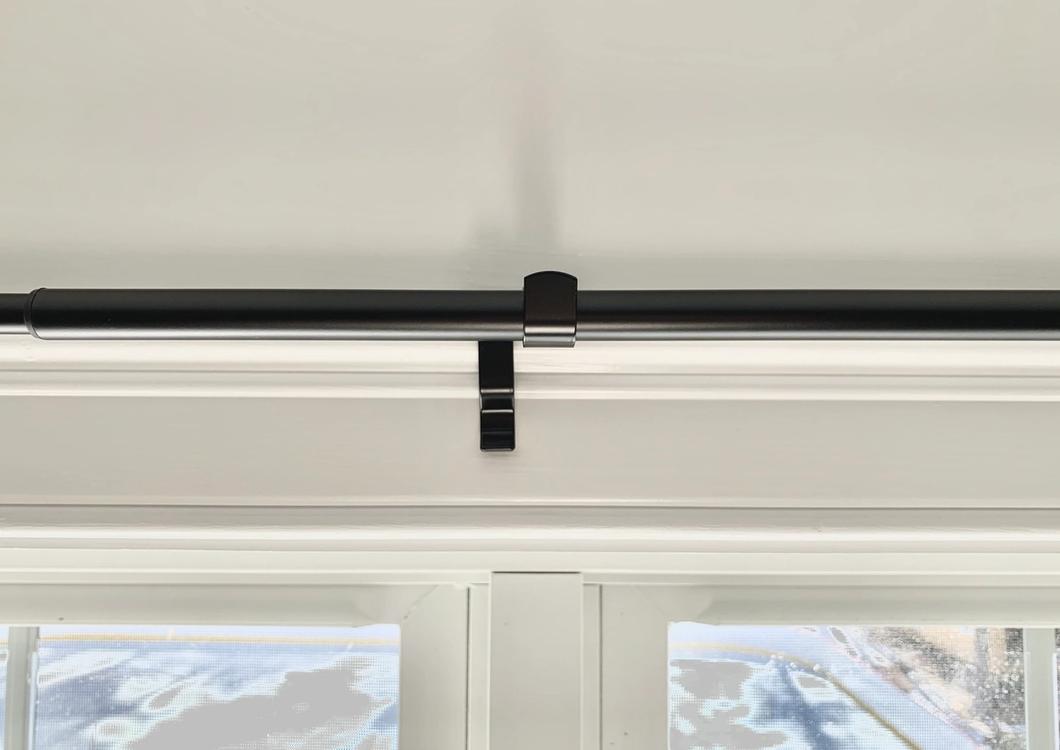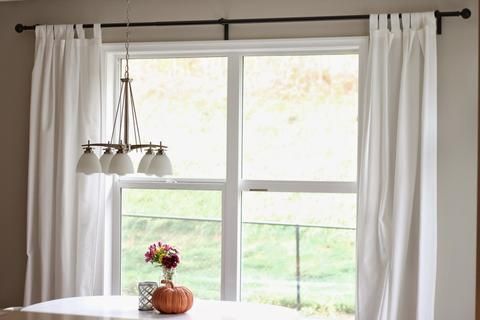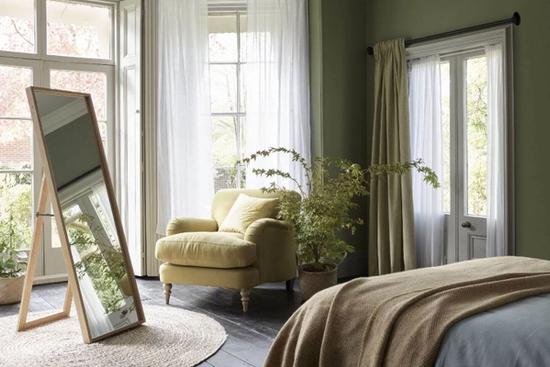How to Reinforce a Curtain Rod and Prevent Wall Damage

Let’s be real: no one enjoys dealing with a sagging curtain rod and screws falling out of the walls.
So what can you do to prevent it?
Some types of curtains and curtain rods require additional reinforcement to remain intact and prevent wall damage.
We’ll break down the best techniques on how to reinforce curtain rod brackets and secure curtain rods.
How to Reinforce Curtain Rods and Brackets
To reinforce your curtain rod brackets and secure your curtain rod, try these methods:
- Use curtain rod anchors or longer screws
- Use a thicker or more durable curtain rod
- Install one or more center support brackets
If your curtain rod is sagging in the middle or keeps falling out of the wall, you’ll want to reinforce and secure it. Unstable curtain rods pose a safety hazard and can cause severe wall damage if left unfixed.
Choosing the right technique will depend on your walls’ material, the width of your window or the type of rod you’re using (more on this below).
You should take extra precautions to reinforce your curtain rod if:
- Your curtains consist of heavy material (think velvet drapes or insulated thermal curtains)
- You’re installing curtains that cover an extensive window span (5 feet or longer)
- You’re installing curtain rod brackets on plaster or drywall
Even if these situations don’t apply to you, it’s best to reinforce your curtain rods for stability, especially if you have pets or children, or plan to open and close your curtains often.
1. Use Curtain Rod Anchors or Longer Screws
Traditional curtain rod brackets install into the wall with fasteners (nails and screws). If you’re using these brackets and need to reinforce your curtain rod, you may need to switch out the nails for something stronger (or longer).
Plastic anchors are ideal for mounting on drywall if you can’t locate a stud in your wall.
If there are studs in your wall, using longer screws might do the trick. Choose screws carefully, as you don’t want to keep drilling (and causing more wall damage) to find the right fit.
Keep scrolling to learn the specifics of reinforcing curtains in drywall or plaster.
2. Use a Thicker or More Durable Curtain Rod
Heavy curtains (such as blackout curtains or velvet drapes) require a durable curtain rod that can hold the extra weight. Look for features like “heavy-duty” or materials like steel, brass or wood.
If your curtain rod is too flimsy, the curtains’ weight will cause the rod to droop and potentially break.
You should also check if your curtain rod is too thin. Curtain rods are typically available in 5/8-inch or 1-inch widths. If you hang heavy curtains on a 5/8-inch rod, your curtain rod will sag over time.
3. Install Center Support Brackets
A center support bracket is a surefire solution for stabilizing your window treatments.
As a rule of thumb, curtain rods require a support bracket every 30 to 36 inches. If your window extends longer than 60 inches, you’ll need to buy two support brackets.
For a reliable, easy-to-install center support bracket that doesn’t require screws, nails or drilling, check out Kwik-Hang’s damage-free curtain rod brackets. You’ll love the patented no-drill design that allows you to install your curtain reinforcements in seconds!

How to Secure Curtain Rods in Drywall
To reinforce a curtain rod in drywall, you first need to figure out if there’s a stud behind the drywall where you’re drilling a hole.
If there is a stud, you can get by with a screw. Screwing directly into a stud is the most secure way to support your curtain rod and brackets. Use a stud finder to locate a stud above your window before trying other methods.
If there isn’t a stud, you need to use a drywall anchor and a screw to reinforce your curtain rod brackets. Without a drywall anchor, a screw won’t be able to hold the weight of your curtain rod. You risk pulling the brackets out of the wall and causing further wall damage.

How to Secure Curtain Rods in Plaster Walls
If you have plaster walls, you may find that regular wall anchors and screws fall right out of the wall.
You’ll need to use a longer screw than the one that comes with your curtain hardware. Make sure you screw through the plaster and into the framing around the window to keep the brackets in place.

Safe and Secure Curtain Rods — Guaranteed
Reinforcing curtain rods is no easy feat. And researching the right kind of hardware to support your curtain rods can be time consuming and expensive.
When it comes to hanging curtains, there’s no need to spend countless hours (and dollars) on trial and error. Save yourself the time, money and frustration with Kwik-Hang curtain rod brackets.
Kwik-Hang’s revolutionary curtain rod brackets are a fast, simple, stress-free alternative to traditional curtain rod brackets. Simply place the Kwik-Hang brackets on the top of your window trim, tap them in, hang your curtains and move on to your next task. No screws, drills, holes or damage.
Kwik-Hang brackets hold up to 20 pounds, and you can reinforce your curtain rod with a single center bracket or double center bracket for added support.
Try Kwik-Hang today and experience the difference for yourself!






